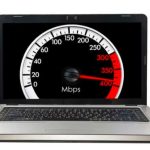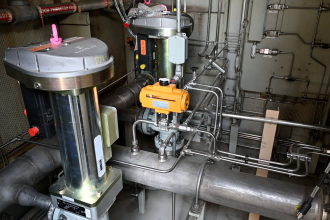When your car’s Check Engine light initially came on, you clearly had no idea what was wrong with it. Not only will you be capable of swiftly detecting what is happening with your automobile with the finest vehicle diagnostic tool. You’ll also be able to assess if it is a serious issue. It requires a mechanic’s involvement or a minor fix that you can manage yourself.
The majority of scan equipment will connect right into your dash. Then it would even send you messages when vehicle systems have problems. Choose a car diagnostic tool that is upgradeable and compatible with your vehicle. You will be given a concise overview of the problem. Its severity, the implications of driving with it, and directions on how to assure you and your vehicle’s continuing safety.
What Is a Car Diagnostic Tool?
A scan tool is a very important thing for diagnostic appliances. A simple car diagnostic scanner tool reads trouble codes like SRS, Check Engine Light, Management Light, and so on.
This tries to clear them for you, although higher-end models have additional functionality. Since there are so many of them in the industry, each with distinct price points and features, picking the correct one may be challenging.
A scan tool is a key to accessing a vehicle’s onboard smarts, as most of us well know. We also discover, sooner or later, how to obtain as much out of your scan tool. No matter how sophisticated it is. This is contingent on your knowledge of the car system.
How to Choose Best Car Diagnostic Tool
Are you a typical car owner? And wants to learn more about your desired vehicle’s issues. Before taking it to a dealership or technician, you’ll need to find a gadget that can help you do just that.
Here are some popular things to think about while selecting the correct code reader for your vehicle:
1. Choose Something That’s Upgradeable
OBD scanners may be upgraded to support newer car models as well as the most up-to-date diagnostic technologies. Purchasing one that is easily upgradeable offers you the ability to utilize it with a newer vehicle. So, be sure the scanner you’re considering buying is upgradeable. Understand how easy it is to upgrade, as well as whether or not you’ll have to pay for it.
2. A Reliable Brand
Because all diagnostic equipment is made differently, it’s best to choose a reputable company that produces high-quality products. In general, certain manufacturers are recognized for manufacturing high-quality OBD scanners with decent functionality and longevity. Whereas others are recognized for creating mediocre goods that don’t last.
You may reduce the likelihood of quality issues by simply picking a reputed brand. Actron, Foxwell, Autel, Innova, Ancel, and BlueDriver are well-known for their high-quality diagnostic Professional scanner. Picking one of these will almost certainly offer you the best bang for your buck.
Between so many OBD2 scanners, Bluedriver and FIXD are the super examples for testing your car’s health issues. To know more about the issues that your vehicles are dealing with, learn about bluedriver with FIXD test.
3. Ease of Use
A handbook is included with all scan tools to assist you to navigate the program, menus, capabilities, and features. This does not, however, imply that it will be simple to use. Apart from the instruction manual, you should search for well-organized buttons, an intuitive UI, clear menus, and mobility.
4. Price of the Scanner
The majority of diagnostic scanners are wide in price from $50 to several thousand dollars. Each model’s pricing is determined by the features and functions that come with it. A competent code reader, on the other hand, does not have to cost a few hundred dollars more.
Consider what you may need this tool and how you may utilize this. Then you decide how much money you are comfortable paying for your car diagnostic tools.
5. Compatibility
When buying an OBD scanner, the most critical element to evaluate is vehicle compatibility. You won’t be able to utilize any gadget if it isn’t appropriate with your automobile model. Most companies maintain a database of car makes and models that are compatible with their tool. Which may be obtained through their customer service team or website.
Some diagnostic tools come with a Bluetooth system. You can connect this tool with your Android Phone and receive notifications. This will aid you to finish the fixes faster. As summarized, select the tool according to the models, makes, along range of vehicle.
6. The Features on the Tool
Car diagnostic tools are available in both high-end and entry-level vehicles. As a result, the kind you pick will be determined by the amount of capability you want from the tool. If you’re on a tight budget, the simple code reader could be the best alternative.
However, if you want more and more features along with functionalities, you have to select the advanced diagnostic tool. Remember, it may cost more. Yet, they may provide services like on-screen info, printability, live feel, along with storage, data logging, etc.
Important Tips on the Best Diagnostic Tool

When you’re going to buy the best diagnostic scan tool you need to consider some things. With these things, you can fully enjoy the scanner tool. Here are some important things that we mention for you-
1. Choosing a Scan Tool
Selecting the correct diagnostic tool is especially important now that getting one is very straightforward for the ordinary vehicle owner. Only trustworthy manufacturers that are well-known for providing high-quality instruments should be considered when purchasing a gadget.
You should also review to watch if the code reader can be updated in the future. You can benefit from fresh manufacturer corrections and the inclusion of newer car types.
In the market, you may find some of the cheaper models which will guide you with a basic code reader. They can read and clear vehicle error codes. For this reason, you don’t need any advanced Factory scan tools.
2. Checking OBD Compliance
Check to see if your car is OBD-II compatible. This is especially significant if your vehicle was manufactured after 1996, as it is a requirement of US law. This will also make working with the manufacturer’s unique issue codes, as well as other testing and diagnostic codes, much easier.
3. Know the Difference Between OBD l Vs OBD ll
All automobiles manufactured before 1996 – before the introduction of digital controls – fall within the OBD I categorize. OBD II compliance is required for the majority of automobiles manufactured after 1996.
It’s also critical that you select a code reader which is compatible with your vehicle’s model, manufacture, and year. In order to understand the differences between OBD I and OBD II automobiles makes it easier to select the appropriate scan tool.
4. Understand the Features of Scan Tool
There isn’t a single scan tool that is exactly the same as another. This is due to the fact that each model has different functions and characteristics. Some automotive diagnostic tools, for instance, provide freeze data, SRS and ABS functionality, a vast database of validated repairs, real-time data, and so on, while others do not. However, in most circumstances, you get what you pay for.
Therefore, for getting various kinds of functions you need to choose a tool that is full of features. Consider all these things before you are going to purchase one of them.
Wrapping Up
Car owners may experience a range of emotions when the Check Engine Light on the dashboard illuminates, including displeasure, irritation, and despair. Owners who borrow or buy car diagnostic equipment can permit them to speak with their automobile’s powertrain control module.
It also discovers the root of the problem can alleviate these bad sensations. After examining several reviews, evaluating some functions and performance of the diagnostic tools, we recommend FIXD as the best overall.














